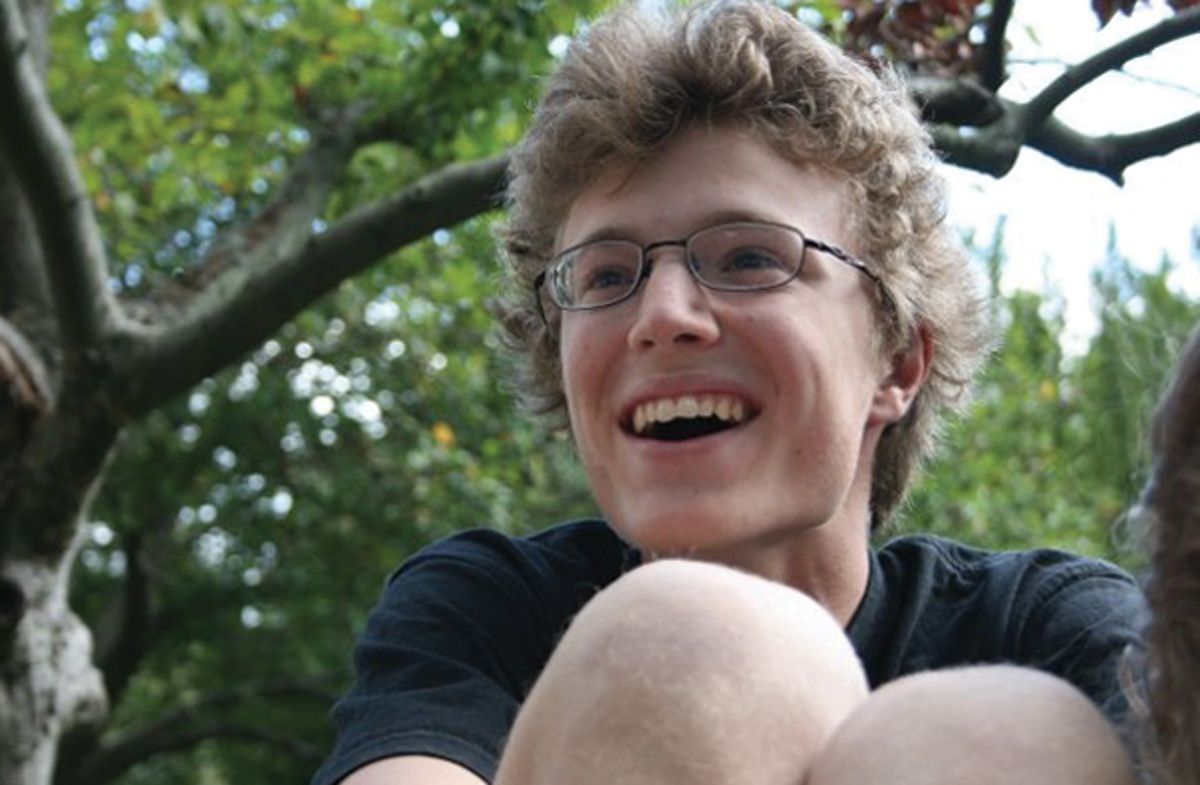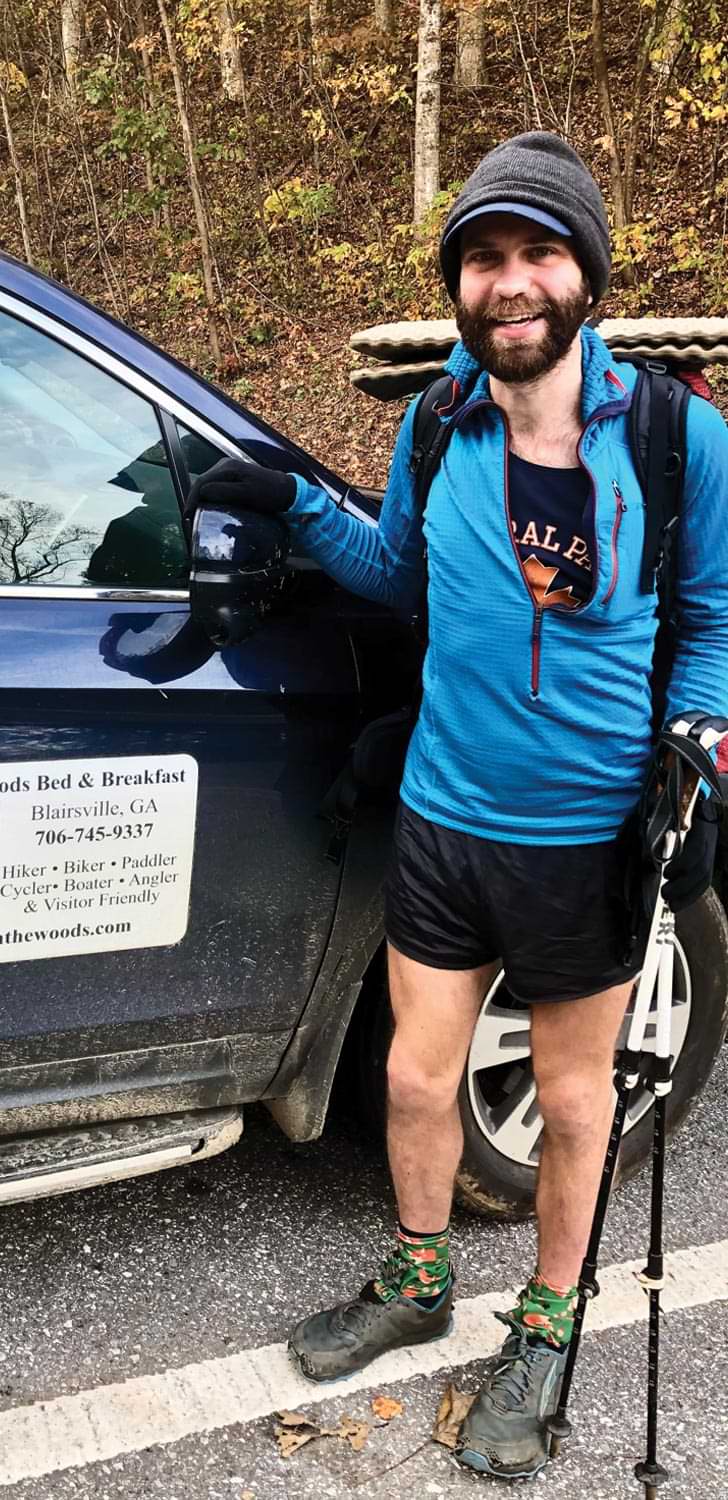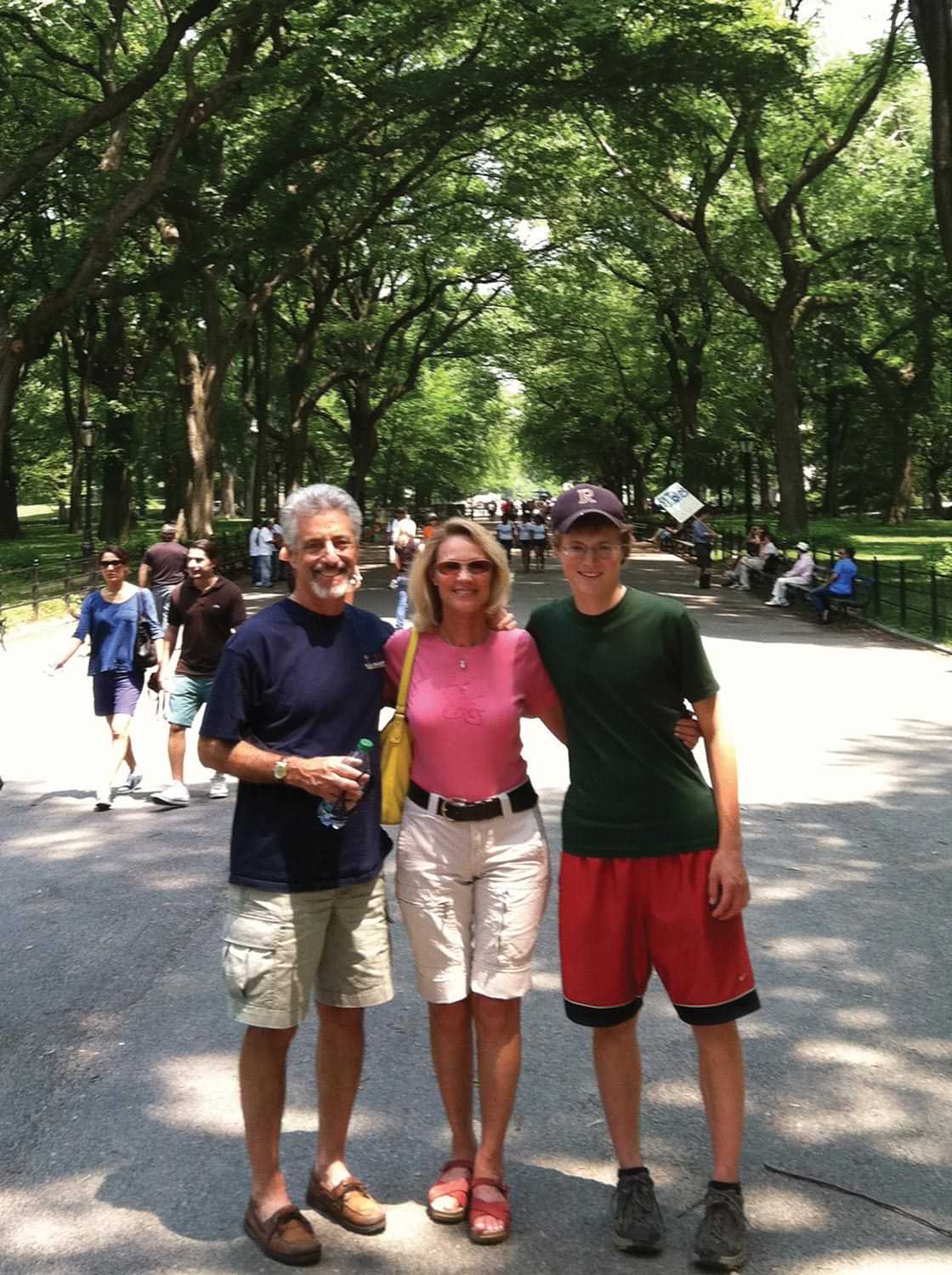North
Danny Cramer and I ran track and cross country together at Swarthmore College from 2009 to 2010, the year I graduated. Danny was in his sophomore year. Swarthmore is not exactly an athletic powerhouse, but it’s a great place to run around in the woods. The campus is an arboretum with miles of wooded trails and the surrounding streets are lovely in a genteel, mainline, Pennsylvania way. Through the Crum Woods and over a bike path is a Quaker retreat that Danny and I liked to visit.
I have a photo of the two of us, and the rest of the men’s cross-country team from fall 2009 that I cherish. When I look at that photo today, what I see, 12 years later, is a lot of men touching each other affectionately. I like that we’re mostly barefoot. During the height of the pandemic, I ached for this kind of intimacy, and I looked at this photo with pain. And when Danny died by suicide in September 2014, I didn’t know what to do — I didn’t “know where to put my hands,” as the singer Mitski says — so I posted it on his Facebook wall with the caption: “missing one of ours today.”


From left: Danny Cramer at Swarthmore College; The 2009 Swarthmore Men’s Cross Country Team.

Seth “Finch” Ariel Green during his thru-hike at Neels Gap in Georgia.
I’m doing okay now, but the past few years have been pretty bad. The last clear moment when I remember being unambiguously happy, pre-pandemic, was at a plant medicine retreat in the Catskills in September 2018. A lot of people in the ceremony were reliving difficult moments, crying, throwing up. I found that distressing, so I went outside and lay down on a bench and looked at the stars. I’d failed out of grad school in 2015, but went on to receive my M.A. in political science. After that, I found what felt like a good, new track with a tech job at a science-based startup in Manhattan. I meditated on my place in the fabric, and a relationship that I hoped was heading towards marriage, and thought: stay the course, Seth. Just keep moving forward.
Three months later, that relationship ended, and I spiraled. It was winter 2019, and I knew the cold and the dark would be trying, so I aimed to just maximize friend time and reading time until the weather got better, at which point I assumed I’d feel good again. And then the summer came, and I kept feeling bad. By that fall I was mostly staying at home and playing videogames all day unless someone actively sought me out. In early March 2020, a few weeks after my job and I parted ways, I retreated to my parents’ house for what I thought would be two weeks of COVID-19 sweeping through the city.
Like most thru-hikers, Danny was a NOBO (northbound thru-hiker). When I started, I hadn’t heard of flip-flopping (hiking north or south, and then “flip-flopping” back to a starting location and hiking the opposite direction to finish the Trail) but by the morning of the first full day, I was hiking with a fellow named Scott who was planning just that. Within a week, he and I were part of a “Tramily,” and I had a Trail name, “Finch,” because I sing a lot, and my companion “Hot Minute” connected that to a dream she’d had about Darwin.
Danny’s Trail name was “Mile Hi.” Our mutual friend Harold recalled the moment when he got that name. He said that on one of Danny’s first few days on the Trail, he encountered some rough weather and quickly found a spot to camp. The only other person at the campsite was an older man who immediately tried to sell Danny illegal drugs. After Danny declined, it came up in conversation that he was from Denver. The old man started laughing and said, “I know your Trail name,” paused and then said, ‘Mile Hi’.”
The thing that feels very Danny about this exchange is that he was happy to keep conversing with the man. Danny was sweet like that. His smile was infectious. His sense of humor had an acerbic edge. As a college student taking time off, Danny would have been part of a solid demographic of thru-hikers. A second mass comprises recent graduates; a third, recent retirees. The rest of us were pretty well identified by Danny’s mother, Kathi, in an interview with the ATC, as people who want to “buy some time, to discover themselves, or because they don’t know what they want to do next, because they don’t know where they fit in the world.”
It took me about two weeks to realize that I was happy. I didn’t want to go back to New York, and I didn’t have to. Walking across farmland in the Cumberland Valley, between Boiling Springs and Duncannon, Pennsylvania, I asked myself what I wanted. It had been so long since I’d heard my inner voice clearly that it felt, and sometimes still feels, like an external force, a guiding spirit, and it told me to keep on. I felt clear-sighted, hopeful, energetic, joyful, grounded, alert, and awake. It was a lovely, spring day. So, after a brief stop at my parents’ house in New York, I kept on. I reached Katahdin in August and Springer in November. This year, I returned to the Trail to complete it. I have now walked 2,194 miles in Danny’s footsteps to get there.
“Traveling north, traveling north, to find you,” Vashti Bunyan whispers to us. I called my dad one day, taking shelter in the ski patrol hut at the top of Mount Bromley in Vermont, and he asked if I had found what I was looking for. But the question had stopped making sense. There was no superordinate goal, nothing for which the Trail was or is an instrument. The point of the day is to travel north. Nothing else.
A lot of my fellow travelers were unabashed, full-time “hiker trash,” (a term of endearment in the hiking community) or “dirtbags” in the lingo of rock climbing. These folks live to be outdoors. They work seasonal jobs, sleep in their cars, or bounce around with friends in the winter. I feel a deep, unexpected affinity with them. They show imagination and courage in committing to something that has no clear mapping to American political or social life. I’m not saying I want to adopt their way of life. Though maybe I do. Or perhaps something in between, like taking six months off every few years to go on adventures. One possibility is that I am at the limits of good sense; another is that I am finally sensing a constraint on the collective imagination that calls for a serious, thru-hike-sized detox.
And what sucks is that the person I really want to hear from about all of this is Danny. After college, he worked as an A.T. ridgerunner for a few summers. My impression is that his depression worsened after he moved back to Denver and pursued a more traditional job. I wonder what he thought about it all. Back when he passed, the kind of despair that swallows up game, player, and all was too far out of lived experience for me to imagine. I was mystified that he would want to leave us. Today, I understand better. But I am keeping on, Danny. I haven’t lost hope.
I just wish that we could talk about it.
Dying young in our modern world means that you are everywhere frozen in amber: Danny on social media, his photos available to hundreds (thousands?) of people, forever a youthful twenty-four, no facial hair, and a guileless smile. I have met many hikers who remind me of Danny, and though we often quickly develop an intimacy born of shared purpose, the truth is that their inner lives are a mystery to me. I hope the Trail brings them the joy and meaning that it brought me, and that it brought my friend.

Steve and Kathi Cramer with Danny in Central Park, New York during his thru-hike.
Danny Cramer
Appalachian Trail Stewardship Memorial Fund
To commemorate their son, Kathi and Steve Cramer launched the Danny Cramer Appalachian Trail Stewardship Memorial Fund. In dedicating a plaque, now displayed in the Harpers Ferry Visitor Center, Steve said, “We believe that hike gave Danny a few more years to live, and we would like people involved with the Trail to know that they helped prolong his life a little bit; a treasure beyond value.”